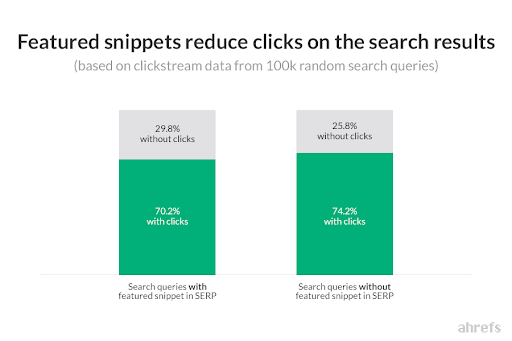We’re halfway through 2019. Digital marketing trends are no longer trends, but established. Their focus? Better customer experience.
A research on customer experience backed these established trends, predicting it will be the key brand differentiator next year.
Yes, customer experience will have a bigger value than price and product in 2020.
This year’s digital marketing trends to track, if left unattended, may not only hinder your marketing growth but also lose your brand’s competitive advantage.
Without further ado, here are the six digital marketing trends you should track and integrate to keep up and get ahead.
1. Chatbots
Currently, more than 60% of businesses have introduced the use of artificial intelligence (AI) in their customer service department. Gartner predicted consumers will manage 85% of their relationships with a company without interacting with a human being next year.
This prediction is as good as fact since 7/10 people prefer chatbots over human agents. These AI bots proved to enhance consumer experience and engagement. Why? They are quick, accurate, and convenient.
Integrating and tracking the performance of chatbot in your business is more than a trend. It is essential. If the mentioned reasons are not enough, take a look at these statistics:
- 71% percent of customers are willing to use chatbots to get fast customer assistance
- 47% of shoppers are open to buying items from a bot
- 99% improvement in customer response time
- $8billion predicted saving compared to a customer service agency
- 34% customer retention in 30 days
|
2. Cybersecurity & Privacy Legislations
Data is a serious business. It is the most valuable resource in the world (better than oil). And it’s only a matter of time before every governing state imposes laws to protect every user’s data.
How serious you ask?
As of 2019, more than 120 countries have their own data protection laws.
Last January, Europe’s policymakers fined Google (including its search engine, Google Maps, and YouTube) $57 million for not properly disclosing to users how they collect data across their services.
Facebook is also facing an estimated $5 billion class action suit for the 50 million users data breached.
General Data Protection Regulation (GDPR) is becoming global, and customers support it. The only thing you can do is to keep an eye on all incoming data privacy and security laws where your business operates and customers live. Implement the applicable laws to your business and be digitally transparent as much as possible. Customers will more likely buy from you.
3. Change in Search
Customers want fast answers. Search engines responded with featured snippets.

The featured snippet is a Google feature that has been around since 2014. Five years later, its existence is becoming a huge debate in the SEO and content world.
Most content marketers are hesitant to give clear-cut answers since winning position zero might result in loss of traffic.
This fear is not unfounded. Ahrefs conducted a study on 14 million keywords with a snippet and discovered position zero is stealing clicks from the #1 ranking result. Also, according to the same research, position zero doesn’t mean more clicks.

Interestingly, HubSpot published a prior study from Ahrefs. The study observed high-volume keywords on position zero produced a 114% CTR boost.
Aiming for position zero or not, you should definitely track this digital marketing trend. Know how you can capitalize on this sweet (or bitter) spot.
4. Artificial Intelligence: Voice assistants

Have you ever heard of Alexa? Of course, you have.
Guess what? Most of your customers know her too.
In Southeast Asia, more than 200 million smart speakers installed.
Here’s what you should know about these AI voice assistants:
These AIs will only become smarter and will be part of customers’ daily lives more than we could ever want or think of. There’s no stopping AIs from being smarter. But, we can be smarter in using AI in business.
Voice assistants are one of the most popular AI uses. But, it’s not all there is in AI. AI can also help you:
- Track, find trends, and predict the future needs of customers
- Improves customer personalization for better customer engagement
- Business decision, accounting, and every facet of business
5. Omnichannel

Having a unified approach for seamless customer experience to interact with your business is essential. That’s omnichannel is all about. Giving your customer the options to communicate with your business whenever they want.
Omnichannel experience provides customers the opportunity to resume their engagement with your brand where they left off. Next year, customers expect every business will perfect this experience.
How to do it? Simply align your messaging, designs, and marketing objectives across all devices and channels. Make all content and help consistent, available, and seamless.
6. Gen Z Market
Gen Z (1995-2010) is in the current market and the future market. They are the true digital natives, not knowing any other life than digital. And, if I may be so bold, the only generation that will matter in the next 5-7 years.
Don’t be misled; they are not millennials.
Dubbed as pragmatic and realistic, Gen Z purchase after they access and evaluate a broad range of information. They value individual expression and avoid labels. They mobilize themselves for a variety of causes.
Start considering Gen Z as your target audience (if you haven’t already). Engage with them. Talk to them. Learn what they want.
With enough data, you might duplicate the success of Nike’s ad with Colin Kaepernick from this generation.
Track and make an impact
Keeping your business updated with these digital trends is important. But what’s critical is how you track and interpret your customer response to these trends.
Learn, adapt, and analyze. Once you have your customers data on these digital trends, follow these steps to make an impactful marketing growth:
- Collect the significant data.
- Get the information.
- Form insights.
- Make a decision.
Whether you’ll keep tracking, let go, or optimize these digital trends, the decision based on your customer insight will make an impactful business growth.
Already tracking these trends? Share your insights in the comments below.